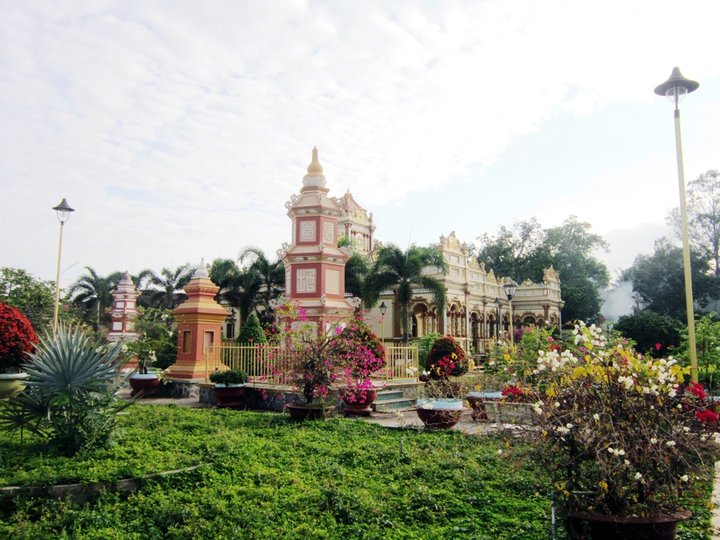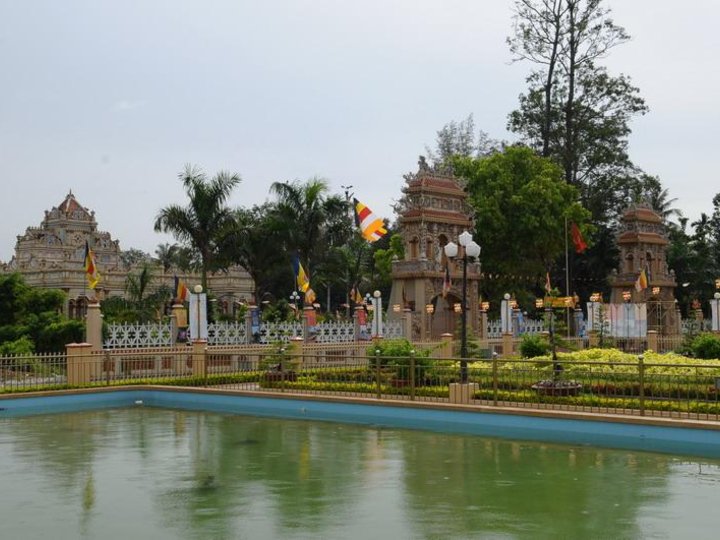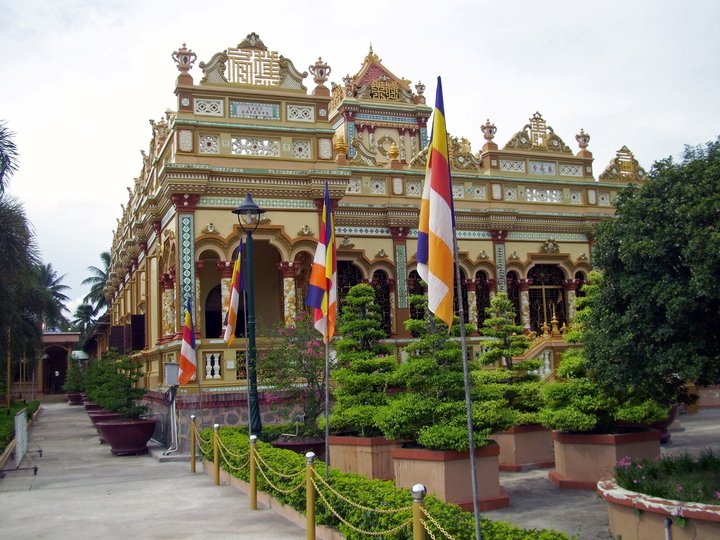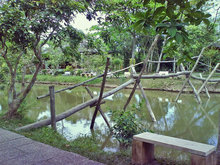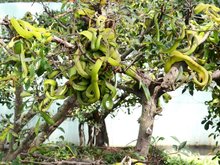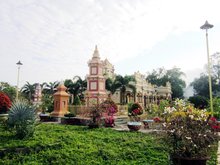Vinh Trang Pagoda
This pagoda was built in 1849 on the site where originally a small leaf hermitage was built by District Chief Bui Cong Dat. Story goes that before the pagoda was built, a monk named Minh Dan and an architect named Huynh Tri Phu traveled to Angkor Wat, Cambodia for inspiration.
Vinh Trang Pagoda is the largest pagoda in Tien Giang Province, with an area of 2,000 m2. It is built in the shape of the Chinese characters for “nation”, and has four large departments that connected with each other: the front department, the main department, the worship department, and the back department. The pagoda is surrounded by gardens of ornamental trees and has three entrances. The central iron gate is always closed, while the two side gates, which are designed in the co lau style are open. The side gates are adorned with colorful porcelain mosaics featuring Buddhist folktales and natural scenery. Two triumphal arches are decorated with pieces of bottle and porcelain. There are paintings and statues of the Amitabha Holy Trinity carved in bronze inside the pagoda. The set of the eighteen arhats, spiritual practitioners who have realised certain high stages of attainment, made of carved wood, is the only one in Vietnam and was created in 1907. It also houses 60 precious statues made of copper, wood and terracotta. There is also a bell casted in 1854. The pagoda was seriously damaged by French colonists in 1861 and a severe storm in 1904. Both times it was restored. Tombs of monks who took care of the pagoda are located around the pagoda. These graves are decorated with carefully engraved flagstones. During the wars it provided shelter for Vietnamese patriots. Vinh Trang Pagoda also provides a home for orphans, disabled and needy children

